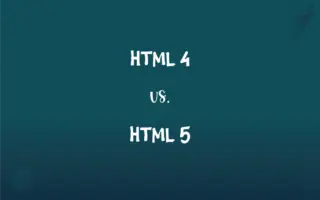PCI 2.0 vs. PCI 2.1: What's the Difference?
Edited by Aimie Carlson || By Janet White || Published on February 9, 2024
PCI 2.0 and PCI 2.1 are versions of the Peripheral Component Interconnect standard, with PCI 2.1 introducing minor revisions and compatibility improvements over PCI 2.0.

Key Differences
PCI 2.0, released in 1993, is a standard for connecting peripheral devices to a computer motherboard. PCI 2.1, introduced in 1995, is an updated version of this standard, offering improved compatibility with newer technologies.
The primary difference between PCI 2.0 and PCI 2.1 lies in voltage and signaling. PCI 2.1 supports a 3.3V signaling environment, unlike the 5V environment of PCI 2.0, allowing for broader compatibility with new hardware.
PCI 2.0 was widely used for connecting devices like network cards, sound cards, and modems. PCI 2.1, while maintaining backward compatibility, was designed to work more effectively with newer, more advanced peripherals.
In terms of physical appearance, both PCI 2.0 and 2.1 are similar, but PCI 2.1 slots can be distinguished by a notch to prevent insertion of incompatible 5V cards.
PCI 2.0 set the foundation for peripheral connectivity, while PCI 2.1 built upon this by enhancing the compatibility and paving the way for future advancements in peripheral technology.
ADVERTISEMENT
Comparison Chart
Release Year
1993
1995
Voltage Support
5V signaling environment
3.3V signaling environment
Compatibility
Limited to older peripherals
Improved compatibility with new peripherals
Physical Distinction
Standard PCI slots
Notch in slots for voltage compatibility
Main Use
Networking, sound, and modem cards
Enhanced support for advanced peripherals
ADVERTISEMENT
PCI 2.0 and PCI 2.1 Definitions
PCI 2.0
A peripheral connection standard prevalent in the early 1990s.
Most computers from that era had PCI 2.0 slots.
PCI 2.1
A standard introducing notches in slots for voltage distinction.
The notches in the PCI 2.1 slots prevent incorrect card insertion.
PCI 2.0
A version of the PCI standard supporting 5V signaling.
The motherboard has several PCI 2.0 slots for expansion cards.
PCI 2.1
A step towards more efficient and versatile hardware integration.
PCI 2.1 expanded the range of devices we could use with our computer system.
PCI 2.0
A technology used for connecting network and sound cards to motherboards.
We upgraded the network card in our PCI 2.0 compatible system.
PCI 2.1
An updated version of the PCI standard, supporting 3.3V devices.
The newer graphics card requires a PCI 2.1 slot for 3.3V compatibility.
PCI 2.0
A foundational standard for peripheral device connectivity.
PCI 2.0 revolutionized how we add hardware to computers.
PCI 2.1
An enhanced connectivity option for modern peripheral devices.
Advanced sound cards are more compatible with the PCI 2.1 slots on our motherboard.
PCI 2.0
A computer bus standard for attaching hardware devices.
My old sound card uses the PCI 2.0 interface.
PCI 2.1
A backward-compatible improvement over PCI 2.0.
Our PCI 2.1 slots can still accommodate the older PCI 2.0 cards.
PCI 2.1
An evolution in PCI technology focusing on improved performance.
PCI 2.1 was crucial for the performance boost in our upgraded workstations.
FAQs
What are the main differences between PCI 2.0 and 2.1?
The main differences are the voltage support and compatibility with newer devices.
Can a PCI 2.1 card work in a PCI 2.0 slot?
Generally, yes, but performance may be limited by the older standard.
Are PCI 2.0 and 2.1 compatible with each other?
They are largely compatible, with some limitations due to voltage differences.
What is PCI 2.0?
PCI 2.0 is a computer bus standard introduced in 1993 for connecting peripheral devices.
Is PCI 2.1 still used today?
It's less common now, replaced by newer standards like PCIe.
What devices typically use PCI 2.0?
Older network cards, sound cards, and modems.
What was the purpose of the notch in PCI 2.1 slots?
To prevent the insertion of incompatible 5V cards.
Was PCI 2.1 a major upgrade over PCI 2.0?
It was a minor upgrade focusing on improved compatibility and voltage support.
When was PCI 2.1 released?
PCI 2.1 was released in 1995.
Can I install a PCI 2.0 card in a newer motherboard?
It depends on whether the motherboard has compatible PCI slots.
What are the voltage requirements for PCI 2.0?
PCI 2.0 supports a 5V signaling environment.
Are PCI 2.1 slots common in modern computers?
They are less common now, largely replaced by PCIe slots.
Were there any speed improvements from PCI 2.0 to 2.1?
The speed was similar, with improvements more in compatibility and voltage support.
Does PCI 2.1 support both 3.3V and 5V cards?
Yes, it supports both, but the compatibility depends on the specific motherboard design.
What is the significance of PCI 2.0 in computer history?
It was a foundational technology that standardized peripheral device connectivity.
How do I identify a PCI 2.0 slot on a motherboard?
Look for a standard PCI slot without the notch characteristic of PCI 2.1.
How do PCI 2.0 and 2.1 compare to PCIe?
PCIe is a more advanced standard with faster data transfer rates and improved performance.
Is it worth upgrading from PCI 2.0 to PCI 2.1?
The benefit is minimal; a more significant performance increase would come from upgrading to a more modern standard like PCIe.
Can PCI 2.1 support graphics cards?
Yes, but newer graphics cards may require more advanced standards like PCIe.
Did PCI 2.1 require new drivers or software?
Generally, no, as it was a hardware standard, but specific devices might have required updated drivers.
About Author
Written by
Janet WhiteJanet White has been an esteemed writer and blogger for Difference Wiki. Holding a Master's degree in Science and Medical Journalism from the prestigious Boston University, she has consistently demonstrated her expertise and passion for her field. When she's not immersed in her work, Janet relishes her time exercising, delving into a good book, and cherishing moments with friends and family.
Edited by
Aimie CarlsonAimie Carlson, holding a master's degree in English literature, is a fervent English language enthusiast. She lends her writing talents to Difference Wiki, a prominent website that specializes in comparisons, offering readers insightful analyses that both captivate and inform.































































